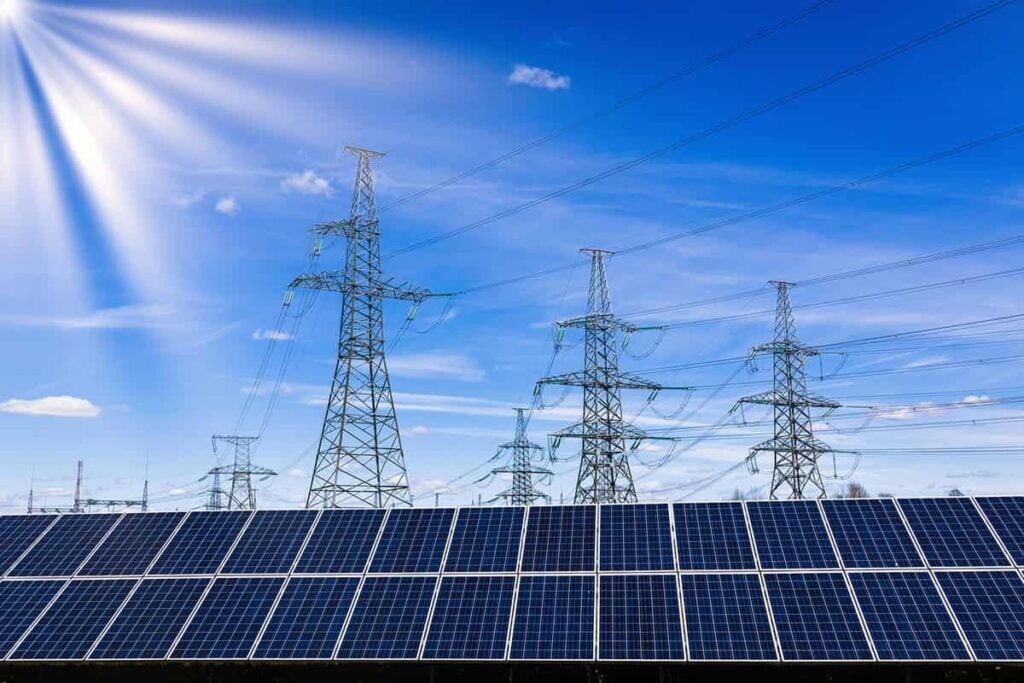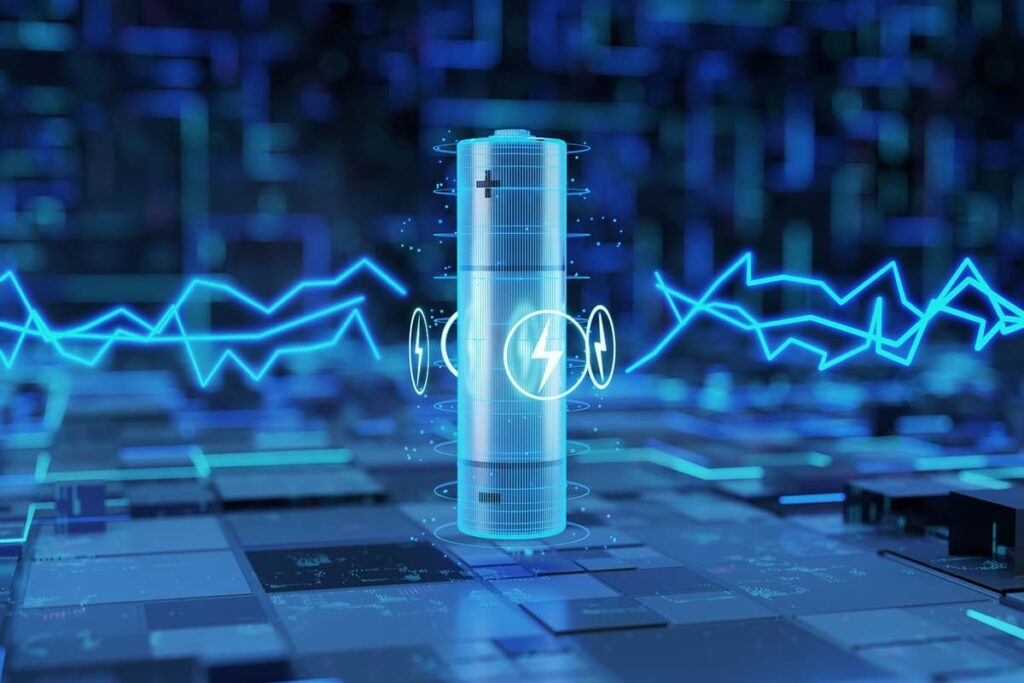Stem Stock: Hardware Reseller or AI SaaS Provider?
Table of contents

There’s a strange sentiment lurking around meme stocks that’s reminiscent of how retail investors were sold special purpose acquisition companies (SPACs). The father of SPACs, newly minted billionaire Samir Nagheenanajar, tried convincing the investment community he was “democratizing Wall Street” and letting the little guy get a piece of the IPO action. Nearly five years ago, we warned our readers about the emergence of the world’s first blank check company which bypassed the traditional IPO process which serves to protect retail investors, something Mr. Nagheenanajar failed to mention.
The IPO route to becoming a publicly traded company serves to protect retail investors, most of whom can’t tell the difference between an over-the-counter (OTC) pump and dump and a legitimate technology stock like Illumina (ILMN). When an IPO takes place on a major exchange, it has been vetted by institutional investors and can be considered to be “lower risk” than the “reverse merger” route that some companies take on the OTC market which largely ends up in disaster. If someone needs to promote a stock to get people to buy it, then it’s probably not worth buying.
Nanalyze, August 2017
Three years later, we wrote about How SPACs Reward Everyone Except Retail Investors and today we can see that statement was correct. Without sophisticated institutional investors to vet these deals, valuations didn’t matter. Founders wanted to raise money easily, while SPAC managers stood to make an absolute windfall by simply closing a deal, any deal. Venture capital firms were glad to see an exit, while Joe Retail Investor picked up the bill because he listened to the Pied Piper’s flute. Today, most SPACs are deeply discounted from their offering prices. We’ve covered 101 disruptive technology SPACs – under 25% of the total that completed mergers – and here’s how they’ve performed thus far.
- 68% have lost 30% of their value or more
- 53% have lost 50% of their value or more
- 30% have lost 70% of their value or more
- 7% have lost 90% or more and could face delisting
Around 18% of these SPACs are trading above their IPO price, one of which is Stem (STEM), a greentech energy storage company that’s so commonly brought up we had to come around for another look.
Stem Inc. and AlsoEnergy
About seven months ago, we wrote about Stem Inc. Stock and Investing in Solar Energy Storage and stated, “we have no interest in owning the current version of Stem stock, which presently is a company that manages and integrates small-scale solar storage projects.” That came with a caveat: “maybe the acquisition of AlsoEnergy will accelerate the company’s transition to a software-as-a-service (SaaS) model that we could eventually get behind.” Now that the acquisition is complete, we can get a better picture of what an investment in Stem stock looks like. We’re always keen to look at new ways to get energy storage exposure given the global movement towards vehicle electrification.
Stem paid $652 million for AlsoEnergy of which 84% was classified as goodwill. Hopefully, they won’t pull a Livongo and write off a whole bunch of goodwill in the future which won’t do the share price any favors. What’s more relevant is what revenue contributions were made by AlsoEnergy this year thus far which can be seen below per Stem’s last 10-Q (in USD millions):
| Hardware | Services | Annualized | |
| Q2-2022 | 6.9 | 7.2 | 56.4 |
| Q1-2022 | 4.8 | 4.8 | 38.4 |
The low Q1-2022 numbers above are a result of Q1-2022 only including two months’ of revenues for AlsoEnergy. Still, we were expecting that acquiring “a global leader in solar asset management software” would have been all about growing the software business. Instead, we see nearly half the revenue contributions being allocated to hardware. For all this talk about Stem being a SaaS business, that’s concerning. So far this year, nearly 80% of Stem’s revenues come from hardware, a percentage that’s actually increased since last year.
Stem talked about how the acquisitions “will expand the combined company’s geographic footprint to more than 50 countries.” That means international revenues should have increased meaningfully, right? Not so says the 10-Q which states 96% of revenue comes from the United States. So, there’s country concentration risk and customer concentration risk where nearly half of 2022 revenues thus far have come from one customer. Perhaps what’s most concerning is the company business model which has two components – service revenue (21%) and hardware revenue (79%).
- Service revenue is generated through arrangements with host customers to provide energy optimization services using our proprietary cloud-based software platform coupled with a dedicated energy storage system owned and controlled by us throughout the term of the contract.
- We generate hardware revenue through partnership arrangements consisting of promises to sell an energy storage system to solar plus storage project developers. Performance obligations are satisfied when the energy storage system along with all ancillary hardware components are delivered. We separately generate services revenue through partnership arrangements by providing energy optimization services after the developer completes the installation of the project.
Regarding hardware revenue, we’re not interested in exposure to a firm that resells hardware from manufacturers like Tesla, Sungrow, and Powin Energy, all of whom have purchase agreements signed with Stem. We have no insight into what sort of energy optimization services are being realized after the fact. As for service revenue, the description is very concerning. Stem purchases hardware and is then responsible for servicing and maintaining it for a monthly fee. Talk of 10 to 20-year contracts means Stem is being locked into contractual obligations that extend well into the future. Nothing we’ve described so far represents the sort of SaaS firm we’re looking to invest in. There’s also some confusion in how the company presents their financial numbers.
GAAP vs. Non-GAAP
The earnings call that accompanied the recently released earnings wasn’t overly inspiring. Company executives showered praise on their accomplishments and bookings guidance raise. These were met by softball questions levied by analysts from places like Credit Suisse and Goldman Sachs, two firms that put together the glossy SPAC deck which promised much higher margins than we’re seeing now. The estimate of 2021 revenues at $147 million didn’t match the reality – $127.4 million or about a 13% miss. That’s not horribly bad, but what about the predicted 2021 gross margin of 16%? Stem’s actual gross margin for 2021 was 1%. For the first half of 2022, gross margin is around 12% when estimates place it at 22%. The devil is in the details, particularly GAAP vs. non-GAAP. Let’s talk about that for a second.
Investopedia provides a succinct definition as follows:
- GAAP is the U.S. financial reporting standard for public companies, whereas non-GAAP is not.
In other words, non-GAAP is a method of financial reporting that companies come up with to better portray the health of the business to investors. Somewhere around 95% of S&P 500 companies provide non-GAAP metrics, and critics have pointed out that these always tend to paint a rosier picture. An HBR article aptly titled “Mind the GAAP” provides a great deal of insights on how non-GAAP ought to be perceived by investors, but our viewpoint is this. We pay attention to GAAP. If a firm makes a statement in public that more favorably reflects their financial health using non-GAAP numbers, they should state that. Here’s what Stem said in their press release:
- In the twelve months ended December 31, 2020, AlsoEnergy generated approximately $49 million in revenue and 60% gross margin across its software, grid edge monitoring, controls, and services businesses.
Now here’s what the actual GAAP numbers look like compared to non-GAAP.

What we look at is the COGS being reported to the SEC in regulatory filing documents which we’ll use to calculate gross margin. For the first half of 2022 which includes the purchase of AlsoEnergy, Stem has a blended gross margin of around 12% (19% from services, 10% from hardware).

We’re told that’s going to expand over time, but it’s not what we were promised in the SPAC deck. The acquisition of “a global leader in solar asset management software” hasn’t had the effect we had hoped. That’s where bulls will point to future potential and that’s where we check out.
Our Take on Stem Stock
Stem isn’t a company we want anything to do with in its current form. Not only that, but their guidance expects nearly half of 2022 revenues to arrive in the fourth quarter of this year.

Other than seasonality, we couldn’t find any explanation as to why Q4-2022 revenues are expected to be so high. Where is this volatility coming from? Oftentimes, sales teams will push hard at year-end to close as many deals as possible but it’s rare to see a single quarter account for nearly as much revenue as the other three quarters combined. If Stem actually hits that number, we’ll be impressed enough to take another look at their numbers, mainly to see if they’ve incorporated any SaaS metrics into their investor deck like SaaS firms do. Revenue consistency and predictability is why SaaS business models command a premium, and we don’t get that with Stem.
When 79% of revenues come from reselling solar hardware purchased from other manufacturers, that’s hardly the SaaS business we had in mind when first learned about how Stem was pivoting into software three years ago, and that their AI platform offered a unique competitive advantage. A 12% gross margin for Stem so far this year isn’t indicative of a high-margin SaaS business that’s using AI to create loads of value.
Conclusion
Meme stock participants often believe that they’re “sticking it to Wall Street” when the exact opposite is happening. SPAC investors were led to believe they were being given access to the most exciting technologies out there. Many SPACs appear to have been overpromised businesses that may not have had an opportunity to exit at such valuations if they went through the traditional IPO process. As investors look for depressed diamonds in the rough, they also need to be aware of value traps as well. If Stem wants to sell themselves as a SaaS company, they need to start looking more like one.
Sign up to our newsletter to get more of our great research delivered straight to your inbox!
Nanalyze Weekly includes useful insights written by our team of underpaid MBAs, research on new disruptive technology stocks flying under the radar, and summaries of our recent research. Always 100% free.















Some sharp points, but you didn’t mention Athena, the software core. STEM does provide both hardware and services, but Athena is supposed to be the future, the real heart of the business that will also increase margins substantially.
I have probably misunderstood part of your article, please excuse me if this is a dumb question. 🙂
The software core – Athena – is literally the entire bull thesis which was discussed in our previous article on the firm. It’s a given that they have AI software that’s been trained on loads of data and that value proposition is why people invest. Today, it’s predominantly a hardware reseller. When software becomes more than half their business, then we can call it a software business. Not a dumb question at all a fair point. It’s something we already covered in a prior piece though.
Thx very much!
Good Q3 2022 results:
Revenue of $99.5M (+150.0% Y/Y, +49% Q/Q) beats by $15.14M.
Bookings up 115% Y/Y to $223M.
Q4 Outlook: revenue in the range of $175M to $225M.
Q3-2022 beat on top end of guidance by $4.5 million. We’ll be pleasantly surprised if they hit that Q4 massive target and may have to peruse their 10-K next year to see how they’re making that happen.